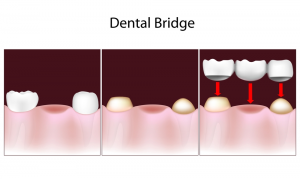Dental Bridge
Dental Bridge In Iran
Best dental bridge clinic in Iran

More than 35.000 Iranian and foreign patients are going under a dental bridge treatment in Iran each year. dental bridge clinic in Iran is on top of the middle-east regarding its skilled specialists and surgeons. Here are the best clinics for the dental bridge in Iran:
- Peris clinic
Dental bridge cost in Iran
There is a significant difference between the cost of the dental bridge in Iran and other countries. The most important factors for the low price of it in Iran are:
- A large number of dental bridge clinic in Iran
- A large number of applicants for the dental bridge in Iran
Dental bridge cost in Iran varies depending on the dental bridge and the clinic. An average cost of dental bridge in Iran is
Dental bridge cost in Iran in comparison with other countries
This treatment costs $4,000 in the U.S., $1,300 in Europe, $350 in Thailand and $250 in Turkey.
Best dental bridge surgeon in Iran
More than 70.000 dental surgeries are being performed each year in Iran. Experienced Iranian doctors with an excellent record are performing the operations. One of the most important factors for choosing a good surgeon for a dental bridge in Iran is the doctor has done many dental bridges.
You can find the best doctors for the dental bridge in Iran on our website by following their experiences.
Why should you travel to Iran for a dental bridge?
Many patients travel to Iran for the dental bridge. One of the reasons for this matter is Iranian specialists and surgeons who have high surgery success rates.
- Low cost of dental bridge in Iran
- Low cost of accommodation in Iran
- Well experienced doctors
- The high number of dental bridge in Iran
Dental bridge centres accordant with today's European standards are performing the highest quality operations in Iran. Another reason for the dental bridge in Iran is its lower cost compared to other countries.
How long should I stay for the dental bridge in Iran?
About Dental Bridge
 During life, several problems affect a person’s health, which one of them is missing one or more teeth. So as lots of people's self-confidence usually comes from their appearance, tooth loss may affect a person’s smile and confidence as well. One of the ways to fill the teeth gap is a dental bridge. In addition to modifying the appearance and beautify the smile, the bridges help the patient to chew food better and talk more clearly. Also, while closing the mouth, they help the person to put the jaws on each other that will prevent teeth wrong movements and distribute a uniform pressure between both jaws.
During life, several problems affect a person’s health, which one of them is missing one or more teeth. So as lots of people's self-confidence usually comes from their appearance, tooth loss may affect a person’s smile and confidence as well. One of the ways to fill the teeth gap is a dental bridge. In addition to modifying the appearance and beautify the smile, the bridges help the patient to chew food better and talk more clearly. Also, while closing the mouth, they help the person to put the jaws on each other that will prevent teeth wrong movements and distribute a uniform pressure between both jaws.
Types of dental bridge
- Traditional Bridge: The most common type of bridge is a traditional bridge, and they are made of either porcelain fused to metal or ceramics.
- Cantilever Bridges: These bridges are the most similar to traditional bridges. The only difference is in one crown. These bridges are made up of pontic, and a crown on one side and another side lies on a natural tooth.
- Maryland Bridge: This type also consists of one or more pontic that has a metal or porcelain framework behind, which is bonded onto the back of two natural abutment teeth.
- Implant-Supported Bridge: When more than one tooth is missed, an implant-supported bridge is usually used.
Recommended for:
- Patients who are looking to restore the appearance and function of their dentures.
- Good candidates are those who have strong, healthy teeth on either side of the tooth gap.
Before Dental Bridge
The number of appointments depends on the type of bridge. Usually, it needs two visits with two weeks interval.
During Dental Bridge
At the first visit, after initial examination, a part of enamel from abutment teeth are removed to make them ready for crown reception, and then the dentist will make a model of teeth by putting some impressions. This model is sent to the laboratory. Also, the dentist chooses the nearest colour to natural teeth for the bridge, from a catalogue. Until the construction of a permanent bridge, the dentist will put a temporary bridge for the patient. It usually takes one to two weeks. During the second visit, the dentist removes the temporary bridge and puts the permanent one. Perhaps more visits are needed to check the final results. In this step, the bridge is cemented temporarily for some weeks, and after ensuring the comfort and fit of the bridge, the patient should go to the clinic again. If the dentist confirms the bridge, it will be cemented to its place.
Recovery
In the first day after the procedure, the patient may feel sensitivity or discomfort that is normal and can be relieved with pain killer pills that the dentist will prescribe for them. Sensitivity to heat and cold or pressure is normal during the first few days after the surgery. Generally, after this procedure, patients need to pay more attention to their oral hygiene. Also, daily flossing and rinsing with an antibacterial mouthwash are recommended.
